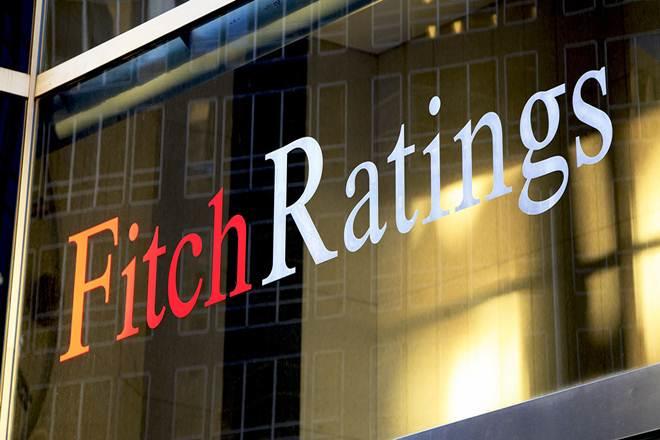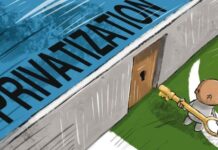
LAHORE: A report released by Fitch Ratings on Friday said evolving domestic security improvements will help to spur business and investment activity in Pakistan.
The report stated as per a recent survey of foreign business operating in Pakistan indicated that compared to 2015, security isn’t a major worry for their operations.
Fitch said bilateral lending from Saudi Arabia, the United Arab Emirates (UAE) and China helped plug the near-term financing gap but are insufficient to rebuild reserves sustainability.
The rating agency observed that liquid foreign exchange reserves of the central bank continued to decline, touching $6.9 billion on 11th January 2019.
And gross financing requirements remain high, notwithstanding a fall in current account deficit as sovereign debt service will grow to $7-9 billion a year over the next three years.
The sovereign debt repayments in FY19 are going to total $8.7 billion, a sharp rise of $3.6 billion from FY18 when it stood at $5.1 billion, said the report.
As per the report, a $1 billion Eurobond repayment is due in April, alongside an additional $2.3 billion in commercial loan bank repayments due in FY19.
It forecast that starting from the early 2020s, debt repayments and profit repatriation from CPEC-linked projects will start to increase.
Fitch said external vulnerabilities continued to grow from high twin fiscal and current account deficit, which contributed simultaneously to sliding of forex reserves in FY18.
Explaining the skyrocketing current account deficit of $18.9 billion or 6.1% of GDP in FY18, Fitch said it was due to strong import growth.
It highlighted the reason for the surging imports was fueled by robust domestic demand and China-Pakistan Economic Corridor (CPEC) investment alongside increasing oil prices.
The report said exports picked up rapidly, especially in the agricultural and textile sectors, but from quite a low base.
To stem the rapid decline in external and fiscal finances, the central bank and the recently elected Pakistan Tehreek-e-Insaf (PTI) government which took office in August last year has taken measures in recent months to realign the macroeconomic policy mix, said Fitch.
In 2018, the State Bank of Pakistan (SBP) hiked the key interest rate by 425 basis points, which includes a 150 bps increase in November last year.
Moreover, Fitch said the central bank allowed greater currency flexibility by permitting the rupee to depreciate by an overall 24% against the dollar over six times since December 2017.
It highlighted the PTI government has lined up bilateral external financing, slapped import duties on non-essential items and rolled back the previous governments’ tax relief measures.
However, Fitch stated these steps have helped narrow the current account deficit but have been unable to stem an ongoing slide in forex reserves.
The rating agency forecast the current account deficit to narrow to 5.1% of GDP in FY19 and 4% in FY20.
Also, import duties and depreciation of the rupee will continue to fuel a decline in non-oil imports, which fell 4.3% year-on-year (YoY) in the 1st quarter of FY19.
The $3 billion in deferred oil imports from Saudi Arabia and lower oil prices will help in narrowing of the deficit, said the report.
Fitch projected exports to remain on a gradual upturn, especially as capacity limitations in the manufacturing segment have shrunk.
In regard to the IMF programme, Fitch observed the government has reportedly been hesitating in its decision to enter into a prospective bailout.
It added if negotiations were successful with the IMF, it would enable to attract stable and sustained sources of financing by opening budget support from the Asian Development Bank (ADB) and World Bank (WB) and providing greater access to global capital markets and bilateral lending.
“However, programme implementation risks would be high in light of uneven adherence to previous programmes.
In the absence of an IMF programme, Fitch forecasts liquid forex reserves to continue to fall to $7 billion by end of FY19,” said the report.
Pakistan’s debt-to-GDP ratio rose to 72.5% in the fiscal year ended June 2018 (FY18) from 67% in FY17 due to rupee depreciation and a widening fiscal deficit.
It forecast the debt ratio to touch 75.6% by end of FY19, as the benefits of a narrower fiscal deficit will be counterbalanced by rupee depreciation.
Due to major fiscal slippage last year, the rating agency projected fiscal deficit to narrow to 5.6% of GDP in FY19 compared to 6.6% in FY18, although over the revised target of 5.1% set by the PTI government.
As per Fitch, Pakistan’s revenue to GDP ratio is considerably low at 15.2% of GDP, although it highlighted the previous governments’ effort in enhancing tax collection which helped it rise from 13.3% in FY13.
It’s projected GDP growth to slow to 4.2% in FY19, down from a thirteen-year high of 5.8% in FY18, as monetary and fiscal tightening measures start to weigh on activity.






